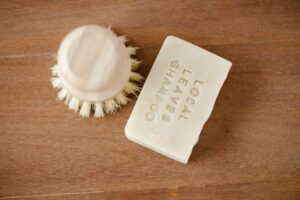Avoid Common Mistakes

Shampoo bars are a popular alternative to traditional liquid shampoos. Not only are they more eco-friendly and cost-effective, but they can also be gentler on the scalp and hair. However, if you’re new to shampoo bars, it can be a bit intimidating to know where to start. In this blog post, we will explore how to transition to shampoo bars and avoid common mistakes.
1. Choose the Right Shampoo Bar
The first step to transitioning to shampoo bars is to choose the right one for your hair type and needs. Shampoo bars come in a variety of formulas, from moisturizing to clarifying, and they are designed for different hair types, such as curly, fine, or color-treated hair. Consider your hair type and any specific concerns you may have, such as dryness or dandruff, and choose a shampoo bar that is tailored to your needs.
2. Prepare Your Hair for the Transition
Before making the switch to a shampoo bar, it’s important to prepare your hair for the transition. This means clarifying your hair of any product buildup or residue from your previous shampoo. You can do this by using a clarifying shampoo or by doing an apple cider vinegar rinse. Simply mix one part apple cider vinegar with three parts water, apply to your hair, and rinse thoroughly. This will help to remove any buildup and prepare your hair for the new shampoo.
3. Don’t Overdo It
When it comes to using shampoo bars, less is more. Many people make the mistake of using too much shampoo, which can lead to dryness and irritation of the scalp. Instead, lather up the shampoo bar in your hands, and then apply the lather to your hair. Start with a small amount, and add more if needed. Remember, it’s easier to add more than to take away.
4. Rinse Thoroughly
Another common mistake when using shampoo bars is not rinsing thoroughly enough. Shampoo bars can leave a residue on the hair if not rinsed properly, which can lead to buildup and dryness. Make sure to rinse your hair thoroughly with warm water, and use your fingers to massage your scalp to ensure that all of the shampoo is removed.

5. Use a Conditioner
While shampoo bars can be gentle on the hair, they can also be drying if used alone. To avoid this, it’s important to use a conditioner after shampooing. Look for a conditioner that is specifically designed for use with shampoo bars, or choose a natural conditioner that is free from harsh chemicals and sulfates.
6. Be Patient
When transitioning to a shampoo bar, it’s important to be patient. Your hair may take some time to adjust to the new formula, especially if you’ve been using traditional liquid shampoos for a long time. Give your hair a few weeks to adjust, and be prepared for some initial dryness or oiliness as your scalp finds its natural balance.
7. Experiment with Different Formulas
Not all shampoo bars are created equal, and what works for one person may not work for another. Don’t be afraid to experiment with different formulas and brands until you find one that works well for your hair. You may need to try a few different options before finding the perfect shampoo bar for your needs.
In conclusion, transitioning to shampoo bars can be a great way to improve the health of your hair, reduce your environmental impact, and save money. By choosing the right shampoo bar, preparing your hair for the transition, using the right amount, rinsing thoroughly, using a conditioner, being patient, experimenting with different formulas, storing your shampoo bar properly, giving your hair a break, and not giving up, you can make the switch to shampoo bars with ease and enjoy all of the benefits they have to offer. So, go ahead and make the switch to shampoo bars today!

